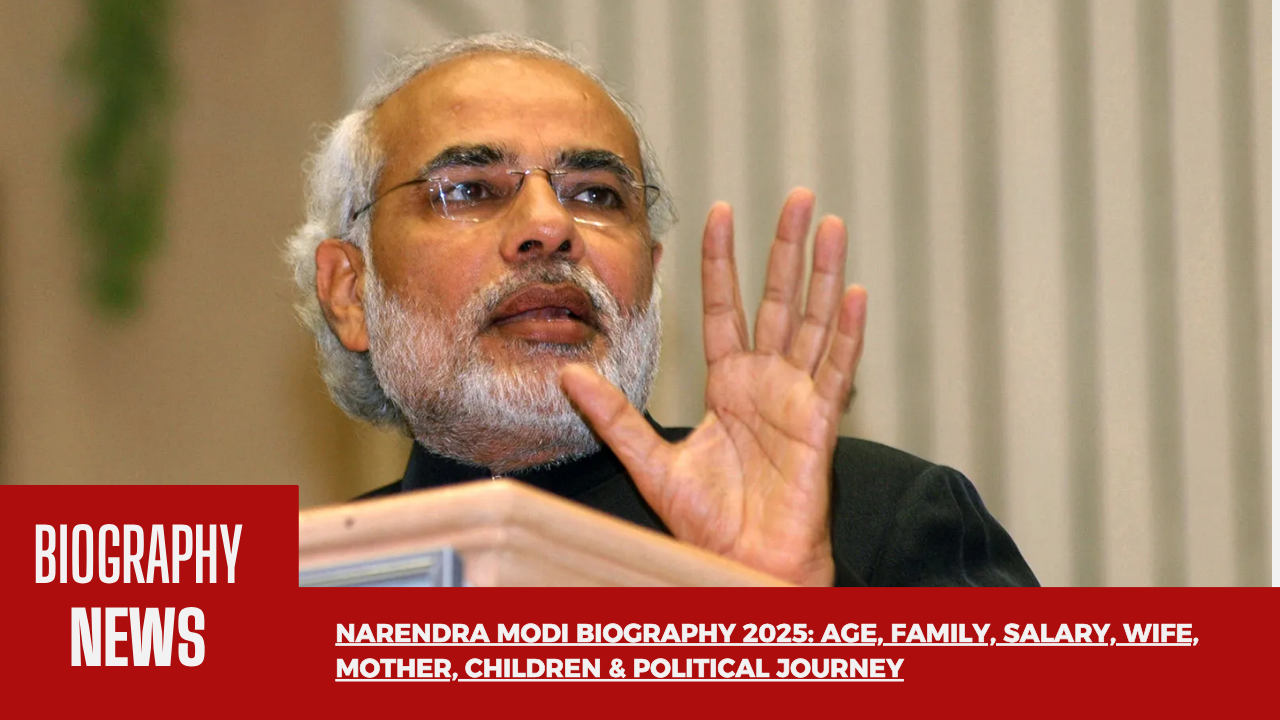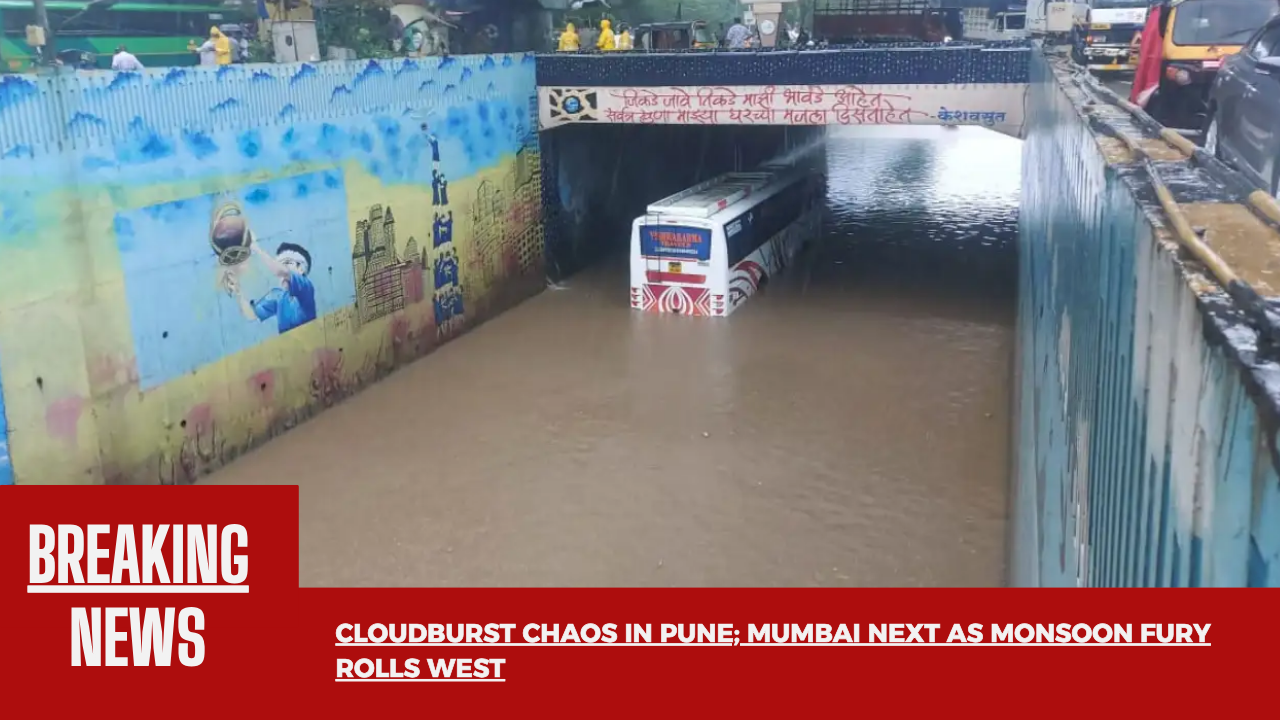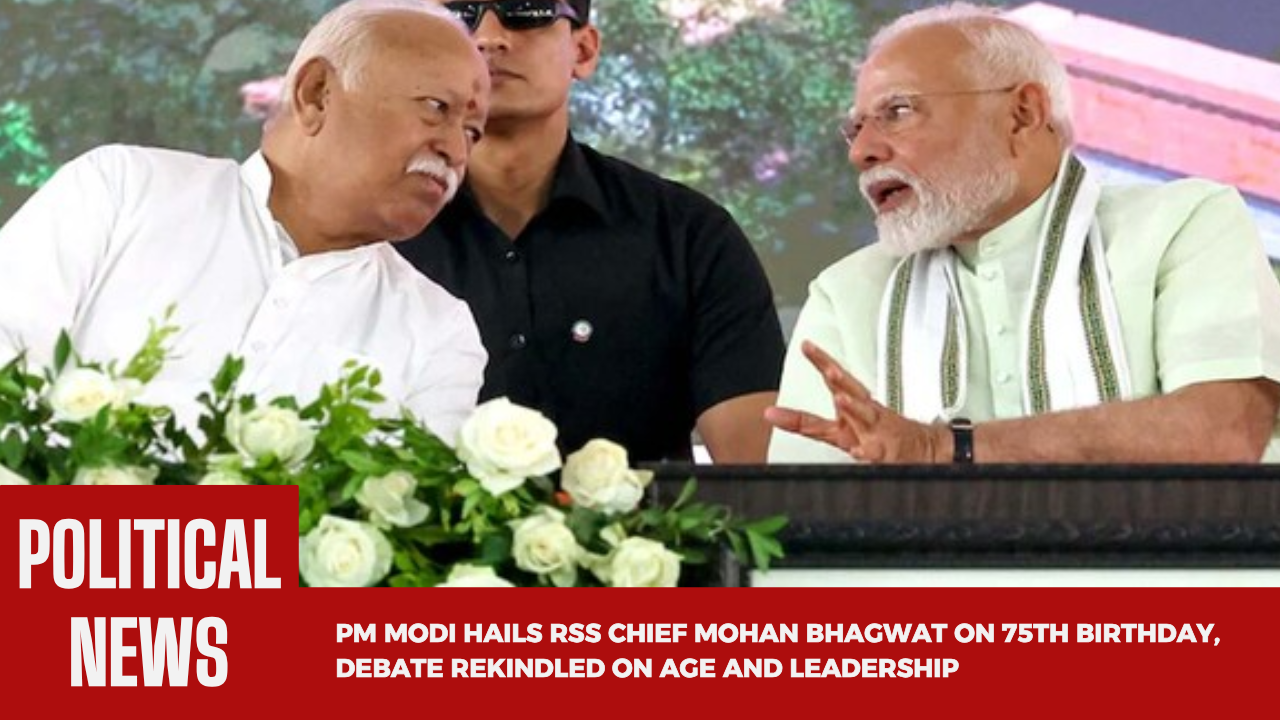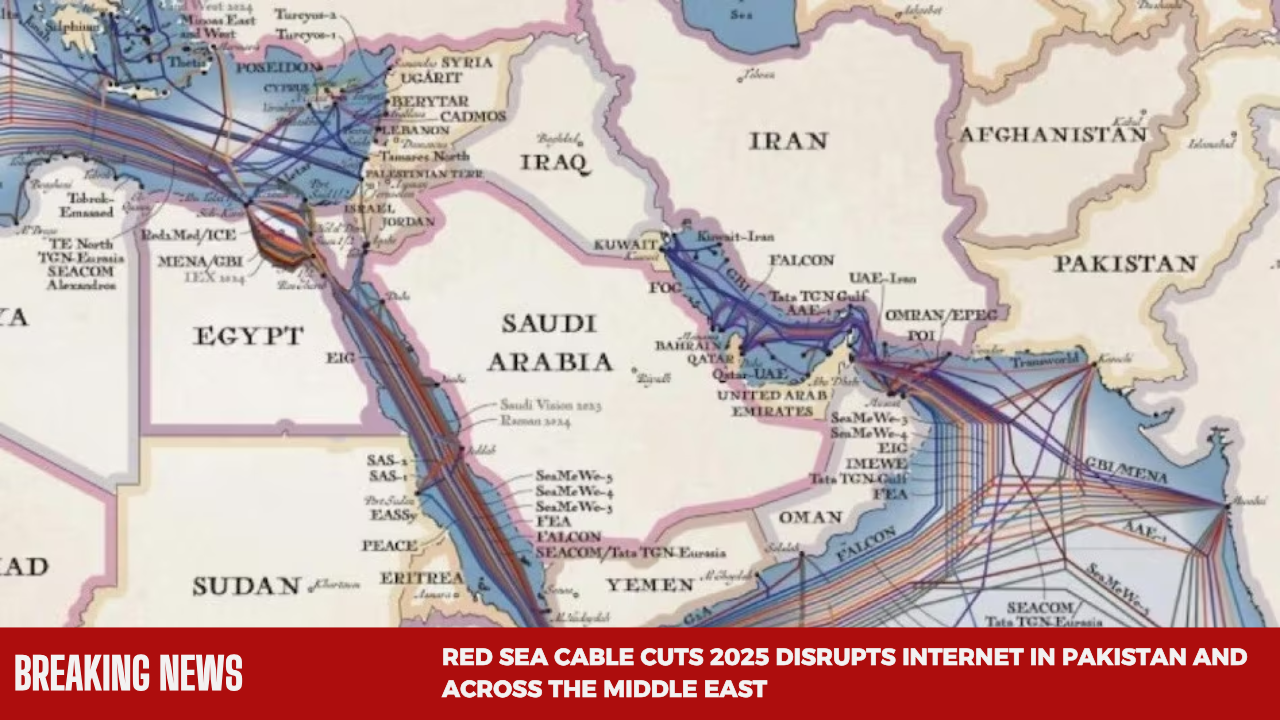By Kajal | Newstic
A Fragile Connection Snapped
The morning of September 6, 2025, didn’t start with breaking news alerts. It started with frustration. Screens froze in Karachi, files wouldn’t load in Dubai, and businesses across Riyadh complained of slow systems. Beneath the Red Sea, two vital internet cables had gone silent.
Independent watchdog NetBlocks confirmed it: damage to the SEA-ME-WE 4 (SMW4) and IMEWE systems near Jeddah, Saudi Arabia. These aren’t just wires under the ocean; they are the arteries carrying Asia’s traffic to Europe. When they stop working, so does half the region’s digital life.
Pakistan Left Struggling
In Pakistan, the slowdown was immediate. PTCL warned users that nationwide disruptions could drag on. On Downdetector, reports spiked through Saturday morning, especially in Karachi, Lahore, and Islamabad.
Engineers scrambled to push traffic onto backup links. But those backups aren’t built to carry the full load. Every click came with a pause, every video call staggered. Businesses lost valuable hours, students missed online classes, and freelancers watched deadlines slip away.
One analyst in Islamabad said bluntly: “We rely too much on too few lines. Every time they break, the country grinds to half-speed.”
🚨Massive internet disruption!
— ARIKA🇮🇳🚩 (@nidhisj2001) September 7, 2025
Multiple subsea cables cut in the Red Sea, hitting key systems (AAE-1, EIG, SEACOM/TGN-EA).
⚡ Microsoft confirms Azure traffic between Asia & Europe impacted, latency rising as traffic reroutes.
🌍 With ~17% of global internet passing through,… pic.twitter.com/NURxmA61VS
The Lifelines Cut: SMW4 and IMEWE
Both cables are well-known in telecom circles. SMW4 stretches over 20,000 kilometers, a chain linking Southeast Asia to Western Europe. IMEWE, newer, runs from India across the Middle East into Europe.
Together, they carry a huge share of the traffic flowing across this corridor. Their sudden failure didn’t just slow Netflix streams — it disrupted banking, shipping systems, remote healthcare, and financial trades.
A Karachi tech entrepreneur told Newstic: “This isn’t just about browsing Facebook. It’s about money moving through banks, planes relying on instant communication, hospitals sharing patient data. Everything slows.”
Microsoft, UAE, and Beyond Feel the Heat
Microsoft admitted what users had already figured out: its Azure services in the Middle East were crawling. Reroutes were keeping the system alive, but latency had spiked across the board.
In the UAE, customers of Etisalat and Du filled social media with complaints. Zoom meetings froze mid-sentence. Online trades failed. VPN users reported repeated dropouts.
A Dubai-based consultant summed it up: “It felt like going back a decade. Every task took twice as long. You realize how fragile all of this is.”
Accident or Something More?
Every time a cable goes dark, suspicion follows. Was it a ship’s anchor scraping the seabed? Wear and tear? Or something planned?
The region remembers 2024, when a similar cut was whispered to be linked to the Houthis. They denied direct involvement, but the story stuck. Undersea cables have become convenient pawns in conflicts that play out far above them.
This time too, the Houthis acknowledged the disruption but stopped short of claiming responsibility. Whether sabotage or not, the mood on the ground remains uneasy.
The Weakest Link in the Digital Chain
A July 2025 report by Recorded Future had already flagged the risks. Cables in the Baltic, the Mediterranean, and around Taiwan had all seen incidents. The Red Sea, with its narrow routes, was always the most exposed.
Nearly all of the world’s internet traffic — not satellites, not wireless towers — runs through these strands of glass. Cut them at a choke point like the Red Sea, and the ripple stretches across continents. Banks slow. Traders lose seconds that cost millions. Families thousands of miles away feel the lag in their living rooms.
Governments across Asia and the Middle East are now being pushed to invest in more redundancy, new cable systems, and even alternative land and satellite routes.
Repair: A Job Measured in Weeks
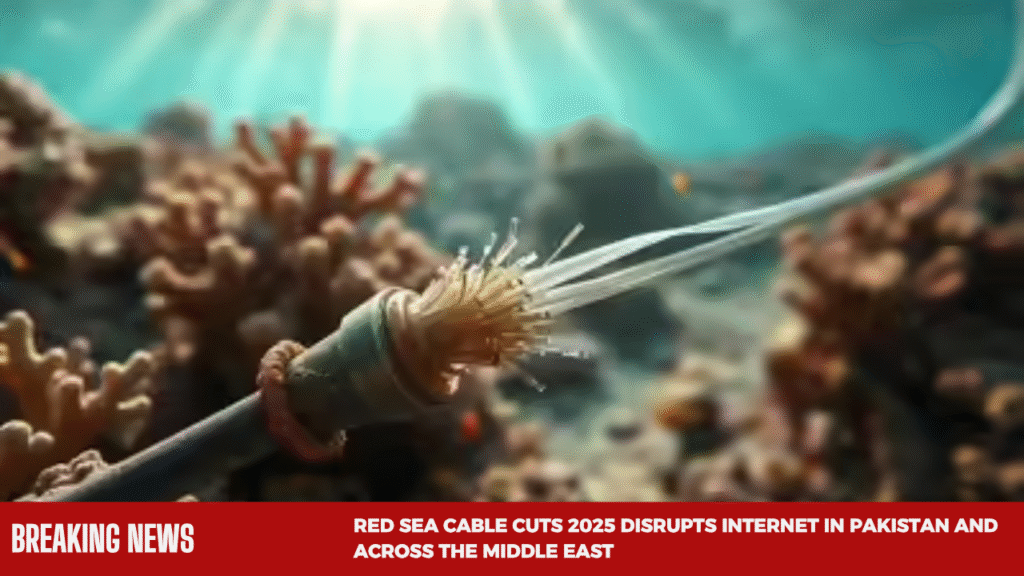
Fixing a damaged cable isn’t like soldering a wire in a workshop. Specialized ships must locate the break with sonar, lift the heavy line from the seabed, splice it with precision, and return it without further stress. Each step can fail. Weather, politics, or security concerns make it slower still.
Experts warn: best-case repairs take weeks. In politically tense waters, longer. For users in Pakistan, the UAE, and beyond, that means living with patchy connections until well into the month.
Country by Country: Who Was Hit
- Pakistan: PTCL confirmed widespread impact. Complaints from students, hospitals, and businesses surged.
- United Arab Emirates: Etisalat and Du customers reported sluggish speeds; finance and trade hit hardest.
- Saudi Arabia: Closest to the break, local operators scrambled to stabilize traffic.
- India: Not cut off, but shared routes meant streaming and cloud services faltered.
- Cloud Providers: Microsoft Azure slowed. AWS and Google Cloud rerouted quietly to limit damage.
How Operators Are Coping
Governments and telecom operators are now throwing everything at the problem. Spare capacity is being rented from other regions. Traffic is rerouted through Europe and Africa. Even older satellite backups are being tapped, despite higher costs and slower speeds.
Microsoft confirmed it was rerouting Azure traffic aggressively. Pakistan’s PTCL said it was working with international partners to access emergency capacity. For ordinary users, though, the message was simple: expect slow speeds for days, maybe longer.
Life Slows Down
Beyond the charts and technical jargon are daily lives disrupted. Students in Lahore missed classes. Freelancers in Dubai lost clients as large file uploads failed. Families in Sharjah and Karachi found evening video calls cutting out.
On social media, #InternetDown and #RedSeaCableCuts trended. Memes joked about “dial-up returning,” but for small businesses, the losses were no joke.
What Experts Are Saying
- “This won’t be the last time. Redundancy is no longer optional, it’s essential.” — Cybersecurity Analyst, London
- “We shouldn’t leap to blame. Anchors, accidents, politics — all are possible.” — Telecom Researcher, Cairo
- “Pakistan must move beyond one or two lifelines. This is the wake-up call.” — Policy Expert, Islamabad
Conclusion: Lessons from the Red Sea Cable Cuts 2025
The Red Sea cable cuts 2025 were more than a technical hiccup. They were a blunt reminder that our digital lifelines are fragile. One accident, one strike, and the seamless web of connectivity that billions take for granted can unravel overnight.
For Pakistan, the outage underlined the urgency of investing in more resilient networks. For the Middle East, it exposed how regional conflicts and digital infrastructure are now intertwined. And for the world, it was proof that the internet may feel infinite, but its backbone is local, physical, and vulnerable.
Until the SMW4 and IMEWE cables are fully repaired, millions will keep feeling the drag. The real challenge isn’t just fixing them — it’s building a system strong enough to survive the next cut
Read more updates
About the Author
Kajal is a staff journalist at Newstic.in, covering national and international news with a focus on business, technology, and culture. With a background in digital reporting and a keen eye for accuracy, she writes stories that combine depth, clarity, and relevance for today’s readers. Her work reflects Newstic’s commitment to credible, fact-checked journalism that informs and engages audiences across India and beyond
Disclaimer
This article is published by Newstic.in for news and informational purposes. While information is verified at the time of writing, details such as prices, dates, or specifications may change. Readers should confirm updates through official announcements or trusted sources before making decisions.

